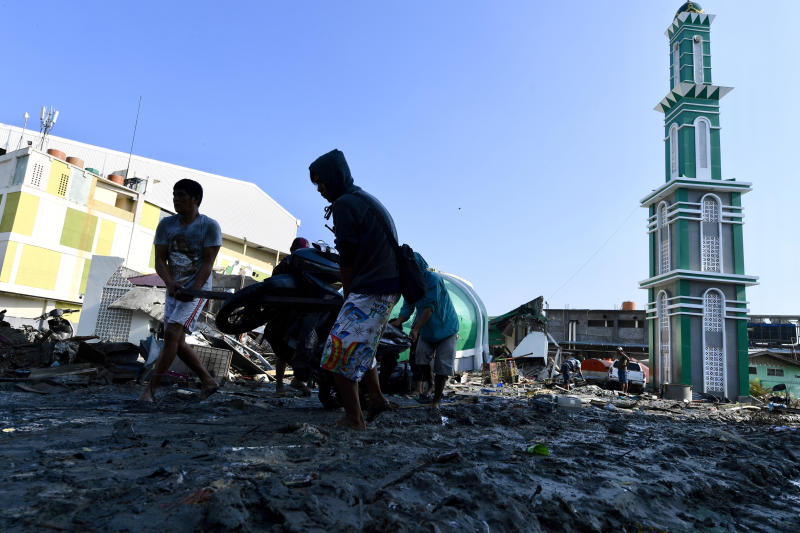Indonesia mulls setting up logistics bases in safe areas to respond faster to natural disasters
Sign up now: Get insights on Asia's fast-moving developments

A 7.4-magnitude quake and a powerful tsunami in Central Sulawesi killed more than 1,900 and destroyed over 66,000 homes on Sept 28, 2018. There is no official figure on how many are missing.
ST PHOTO: DESMOND FOO
Follow topic:
JAKARTA - Indonesia is considering setting up several logistics bases in safe regions to ensure aid can reach people faster when there is an earthquake or a tsunami.
Each logistics base would have on standby excavators, food, water filters, power generators and navy ships that can be deployed promptly any time.
Mr Atmadji Sumarkidjo, special staff to the coordinating maritime affairs minister, said ample amounts of aid could reach disaster-affected areas within 24 hours, well within the golden time, during which quake and tsunami victims have the highest chance of surviving if they get prompt assistance and medical treatment.
The logistics bases could be located in areas "non- or less-potential to earthquakes" such as Banjarmasin and Balikpapan in Kalimantan, Makassar in Sulawesi, and Surabaya in Java, Mr Atmadji told The Straits Times on Monday (Oct 8). The other two likely locations are Bangka-Belitung Islands and the eastern coast of North Sumatra province, near the provincial capital of Medan, he said.
Coordinating maritime affairs minister Luhut Pandjaitan said over the weekend that he has commissioned a team to study having logistics bases and seeing which spots are ideal. The results of the study will be submitted to President Joko Widodo, as part of the proposal to have a long-term strategy to deal with earthquakes and tsunami.
On Sept 28, a 7.4-magnitude quake and a powerful tsunami in Central Sulawesi killed more than 1,900 and destroyed over 66,000 homes. There is no official figure on how many are missing.
Some of the government offices and schools in areas affected by the quake and tsunami have started to open on Monday, Indonesia's disaster management agency (BNPB) head Willem Rampangilei said in a media briefing on Monday. He appealed to civil servants and teachers who fled Central Sulawesi to return and go back to work.
He also said the search for victims and evacuation of bodies will stop on Oct 11.
"If we keep digging after two weeks, it would cause the spread of disease and endanger rescuers and survivors," he said.
As many as 100 shelters used as temporary classrooms have been set up and another 140 will be set up on Monday, Mr Willem added.
About 90 per cent of the electricity distribution boxes in the affected areas have started functioning but in many cases electricity to households remains disrupted, and 1,000 dedicated officials have been deployed to fix connection lines.
Indonesia sits on the Pacific's "Ring of Fire", making it vulnerable to earthquakes as well as volcanic eruptions. But some of its islands, including Kalimantan, and places like Surabaya, have either had no earthquakes at all or had only minimal impacts because they are far from the fault-lines.
In December 2004, a 9.1-magnitude earthquake off the coast of Sumatra triggered a tsunami across the Indian Ocean that claimed 226,000 lives in 13 countries, including more than 120,000 in Indonesia.
In the statement over the weekend, Mr Luhut also said the government is gathering inputs from tsunami experts from overseas and Indonesia to have other long-term strategies to mitigate the impacts of earthquakes and tsunamis.
"In-depth study on coastal areas is urgently needed as Indonesia has a 108,000-km coastal line and more than 150 million of its people live in the coastal areas," he said.

